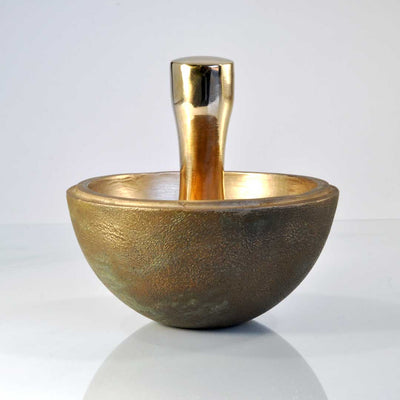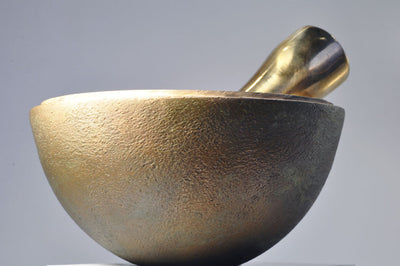Your Cart is Empty
.


$ 1,200.00
Venus has a dense clouded swirling atmosphere and a surface covered in sediment and relatively angular rocks. Scientists were unable to examine of the surface of the planet until 1970s and the development of radar imaging.
At least that’s the version you probably remember. On October 20, 1975 Vanera 9 landed on the surface of Venus and sent back the first images of the planet’s surface. A series of successful satellites launched by the Soviet Union in the 1970s and 1980s didn’t seem to make it into the headlines of the time.
After the mortar and pestle is cast and the bronze has cooled, the surface is worked to create the rocky pattern. The bronze is heated again and the patina is applied to the outer surface of the mortar.